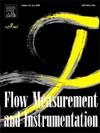The Boussignac valve: Experimental and numerical study of the working principle and thermofluid behavior
IF 2.3
3区 工程技术
Q2 ENGINEERING, MECHANICAL
引用次数: 0
Abstract
Devices that generate Continuous Positive Airway Pressure (CPAP) allow to increase respiration pressure in patients and enable an easier oxygenation. Despite advances in device size and noise reduction, many of them are still found cumbersome by patients. The Boussignac valve is a device without moving parts and reduced noise, able to generate CPAP by the coalescence of four high-speed-air jets. When connected to a face mask and an oxygen source, it may help in non-invasive ventilation procedures without disturbing patients. Due to its working principle, the generated pressure becomes a function of the valve flowrate, so its characterization becomes of vital importance to ensure patients receive adequate treatment. In this work, experimental tests and numerical Computer Fluid Dynamics (CFD) simulations were combined and compared with the manufacturer curve. It was possible to identify the main mechanisms responsible for pressure generation and flow amplification. – jet coalescence and viscous shearing. In contrast to the initial assumption of turbulence generating a one-directional valve, bidirectional flow was observed in the simulations, allowing exhaled air to leave the valve in the opposite direction. Pressure generation was found at between 20 and 60 % of the valve length. In addition, compressible effects arise as the flow rate increased above 10 L/min, leading to supersonic conditions at more than 25 L/min and the corresponding local temperature drop at the jet passages. The numerical procedure used may serve as a guideline for developing new valve models, ensuring mesh-independent results.
布西纳克阀:工作原理和热流体特性的实验和数值研究
产生持续气道正压通气(CPAP)的设备可以增加患者的呼吸压力,使氧合更容易。尽管在设备尺寸和降噪方面取得了进步,但许多设备仍然被患者发现笨重。Boussignac阀是一种没有运动部件和降低噪音的装置,能够通过四个高速空气射流的合并产生CPAP。当连接到口罩和氧气源时,它可能有助于非侵入性通气程序,而不会打扰患者。由于其工作原理,产生的压力是阀门流量的函数,因此其特性对确保患者得到充分的治疗至关重要。本文将实验测试和数值计算流体力学(CFD)模拟相结合,并与制造商曲线进行了比较。有可能确定负责压力产生和流量放大的主要机制。-射流聚结和粘性剪切。与最初假设湍流产生单向阀相反,在模拟中观察到双向流动,允许呼出的空气以相反的方向离开阀。压力产生在阀门长度的20%到60%之间。另外,当流量大于10 L/min时,会出现可压缩效应,导致超过25 L/min的超声速状态,射流通道局部温度相应下降。所使用的数值程序可以作为开发新阀模型的指导方针,确保与网格无关的结果。
本文章由计算机程序翻译,如有差异,请以英文原文为准。
求助全文
约1分钟内获得全文
求助全文
来源期刊

Flow Measurement and Instrumentation
工程技术-工程:机械
CiteScore
4.30
自引率
13.60%
发文量
123
审稿时长
6 months
期刊介绍:
Flow Measurement and Instrumentation is dedicated to disseminating the latest research results on all aspects of flow measurement, in both closed conduits and open channels. The design of flow measurement systems involves a wide variety of multidisciplinary activities including modelling the flow sensor, the fluid flow and the sensor/fluid interactions through the use of computation techniques; the development of advanced transducer systems and their associated signal processing and the laboratory and field assessment of the overall system under ideal and disturbed conditions.
FMI is the essential forum for critical information exchange, and contributions are particularly encouraged in the following areas of interest:
Modelling: the application of mathematical and computational modelling to the interaction of fluid dynamics with flowmeters, including flowmeter behaviour, improved flowmeter design and installation problems. Application of CAD/CAE techniques to flowmeter modelling are eligible.
Design and development: the detailed design of the flowmeter head and/or signal processing aspects of novel flowmeters. Emphasis is given to papers identifying new sensor configurations, multisensor flow measurement systems, non-intrusive flow metering techniques and the application of microelectronic techniques in smart or intelligent systems.
Calibration techniques: including descriptions of new or existing calibration facilities and techniques, calibration data from different flowmeter types, and calibration intercomparison data from different laboratories.
Installation effect data: dealing with the effects of non-ideal flow conditions on flowmeters. Papers combining a theoretical understanding of flowmeter behaviour with experimental work are particularly welcome.
 求助内容:
求助内容: 应助结果提醒方式:
应助结果提醒方式:


